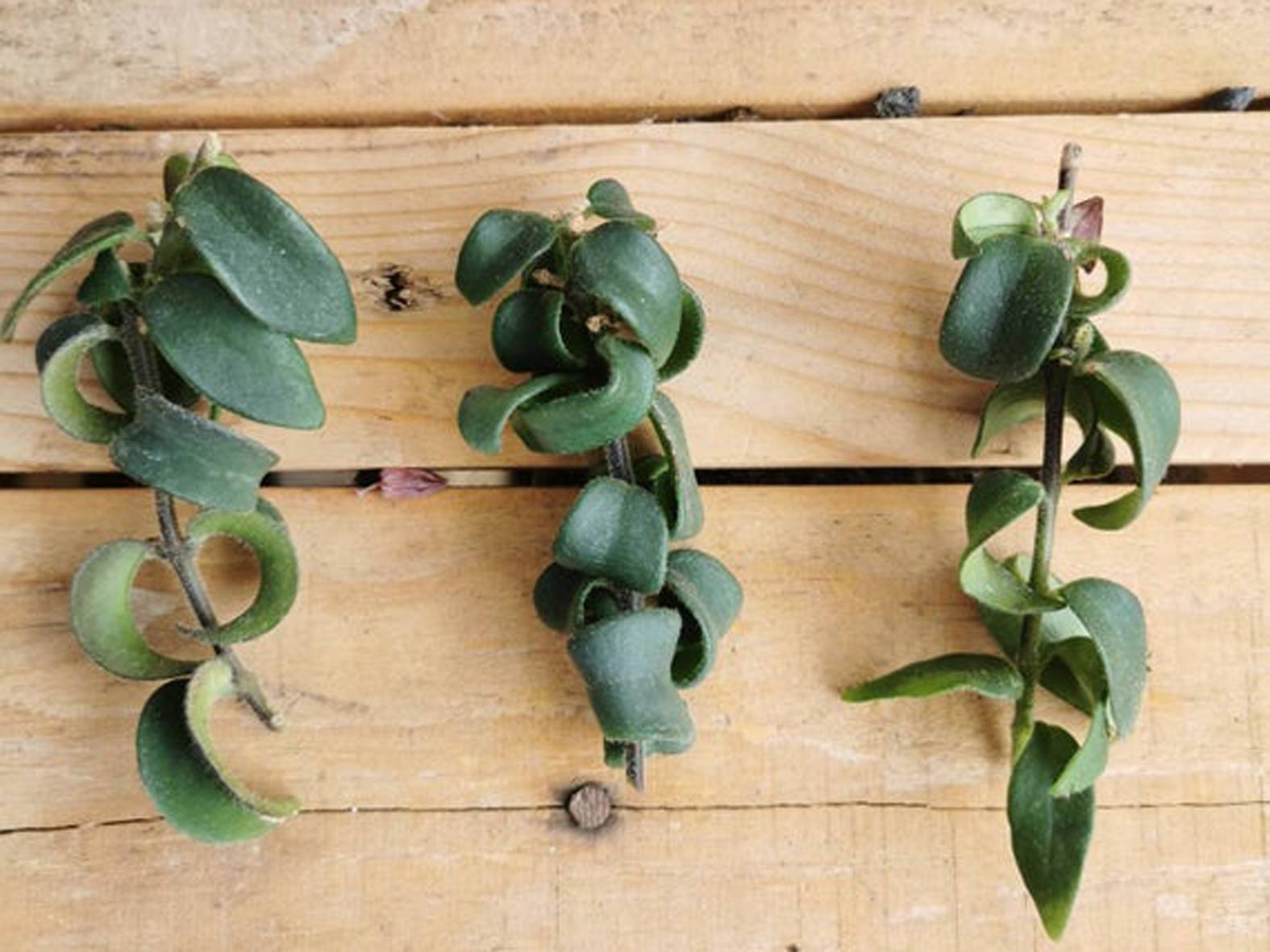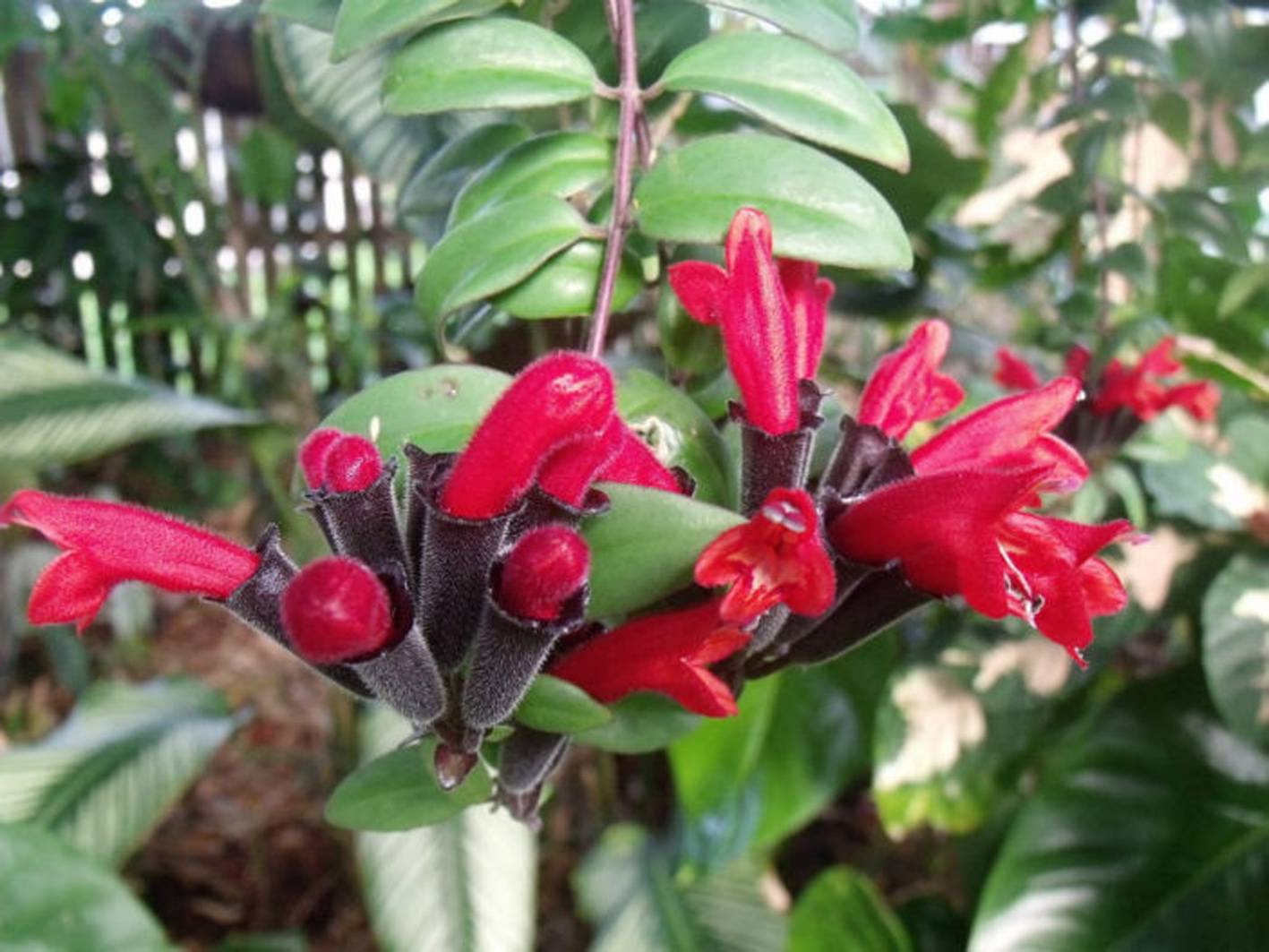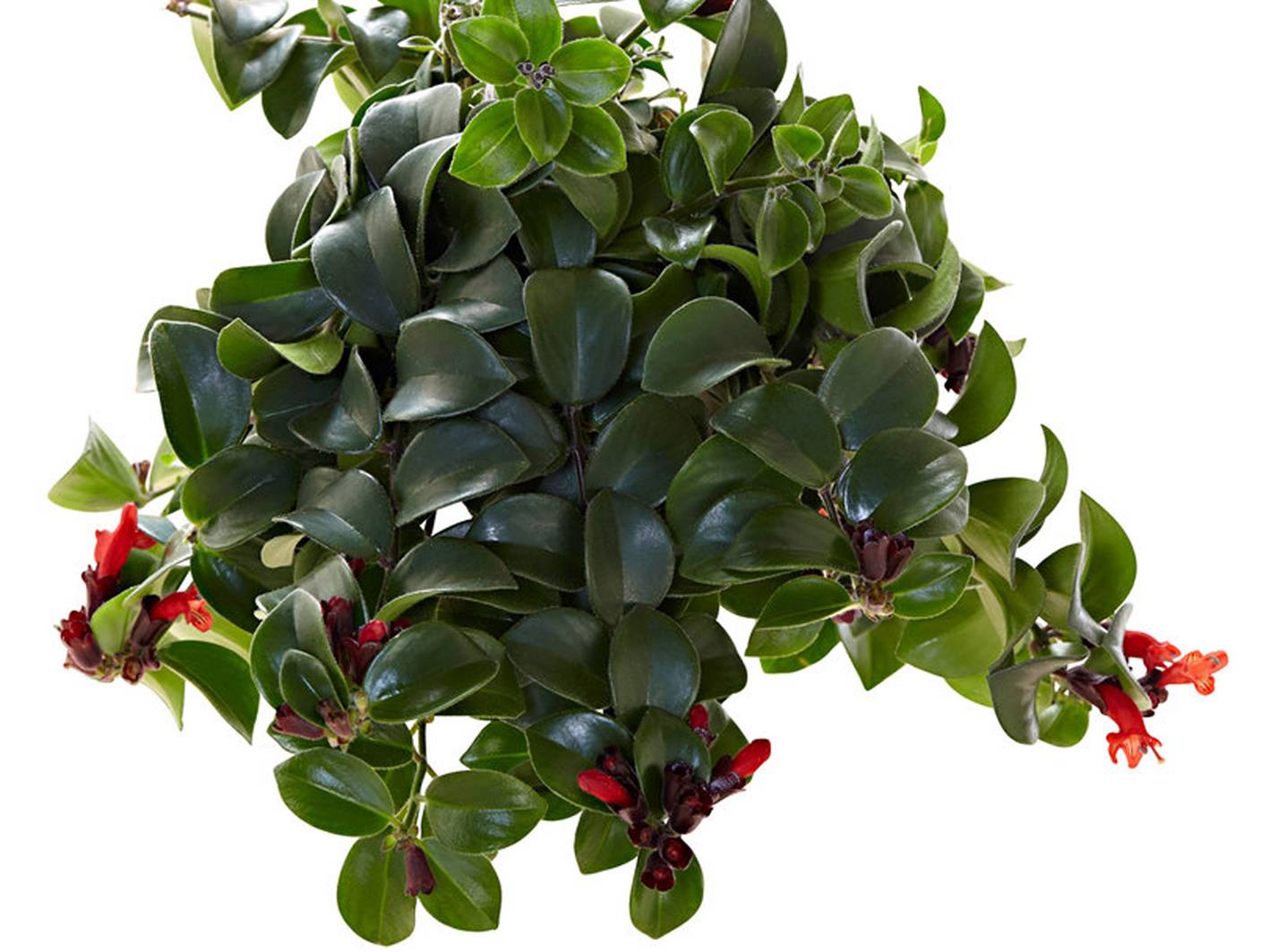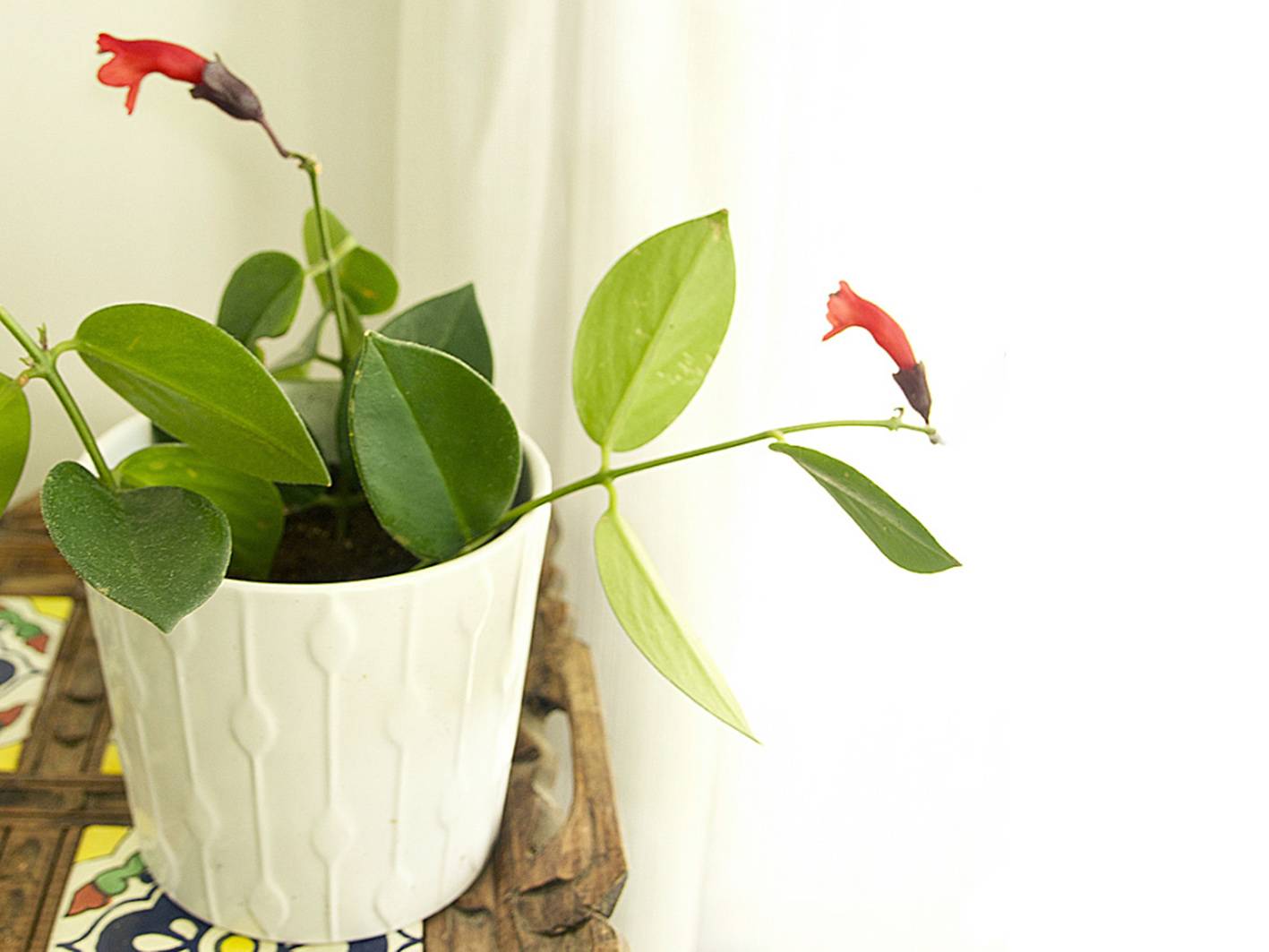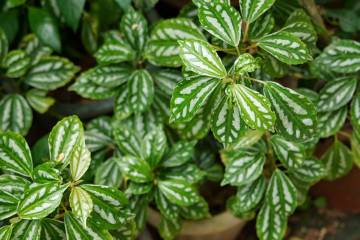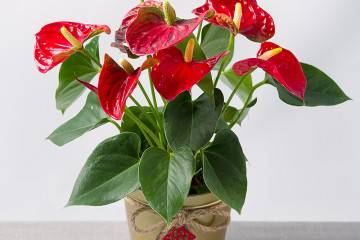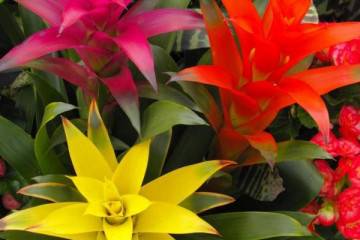Eschinanthus - home care and reproduction
Eschinanthus is an exotic flower that comes from South and Southeast Asia, and is still a novelty for many flower growers. It is unusual and decorative, and its original flowers are striking both in shape and color. The plant is very demanding in terms of care and maintenance conditions. Before you become the proud owner of this exotic beauty, you should learn more about the flower and the features of caring for it.
Eschinanthus: home care, reproduction
Aeschinanthus in the wild grows like an epiphyte on tree trunks, but does not parasitize on them. It is rather useful, because bright flowers attract birds. The plant belongs to the Gesneriev family.
Against the background of dense and lush greenery, bright flowers of an unusual shape stand out especially. Most often they are painted in bright red or shades close to it. In most varieties, the inflorescences are collected in brushes, which are located at the ends of the shoots. The shape of the flower is rather unusual - tubular with a wavy edge.
Home care
In order for the eschinanthus to feel comfortable and please with annual flowering, it needs to provide the most favorable conditions for growth. This implies not only caring for the plant, but also its correct placement in the apartment.
Novice growers who decide to start growing this exotic flower should carefully read each point of care.
- Lighting. Aeschinanthus needs continuous and intense lighting throughout the year. It is best to place it on a windowsill on the east or west side. It is with this arrangement that the light will be diffused. Ventilate the room very carefully so as not to expose the plant to drafts and cold air.
- Watering. From spring to the first winter month, the soil should be moistened regularly and moderately. Drying of the soil is permissible by a maximum of 2-3 cm. Overmoistening and stagnation of water in the sump should be avoided.
- Humidity. Spraying the leaves is carried out regularly throughout the season, with the exception of winter. They are also wiped from dust with a soft cloth or cotton pad. The ingress of moisture on the surface of the inflorescences should be avoided.
- Top dressing. As a fertilizer, it is recommended to use complex preparations for flowering indoor crops. Top dressing is applied in spring, summer and autumn with a frequency of every 14-18 days. In winter, there is no need for fertilizers, this is a period of rest and rest.
- Temperature. During the period of activity, the optimal indicators are 22-24 ° C. In the cold season, they need to be reduced to 17-19 ° С, but not lower than 15 ° С. Both heat and cold are contraindicated.
In addition to the fact that it is necessary to follow these recommendations, it is equally important to choose a nutritious and loose soil, as well as to transplant the plant into a new pot on time. Young specimens need it annually, and older ones are transplanted as the root system grows.
Eschinanthus: propagation by cuttings
The easiest way to propagate an exotic escinanthus is using the cuttings method. The best time to do this is before or after flowering.
The process itself is performed step by step:
- Cuttings are cut with a length of 10-12 cm, using the ends of the shoots for this purpose. Each must have at least 4 leaves.
- After removing the lower leaves, place them in a container with water, into which it is recommended to add a preparation to stimulate the formation of roots.
- After the emergence of developed roots, the cuttings are planted in a container with nutritious soil, on the bottom of which a drainage layer of small pebbles or expanded clay is poured.
- Establish a shelter and place the plantings in a warm and bright place. The optimum temperature level is 25 ° C.
- After 2-3 weeks, the cuttings will take root and can be transplanted into separate containers.
Experienced flower growers recommend placing several young seedlings in one pot at once to get a more lush bush. In addition, it will contribute to an abundant and long-lasting flowering.
Popular varieties
There are several varieties of Aeschinanthus that are suitable for growing in an apartment. Each species is beautiful in its own way and has certain characteristics regarding care and maintenance.
Aeschinanthus the beautiful
This variety can be called the most common among indoor. Large leaves and bright inflorescences look very contrasting and impressive. The tubular flowers have an interesting color - there is a smooth transition from a yellow base to a red curved edge.
Eschinanthus Mona Lisa
The most unpretentious representative of this exotic group is the escinanthus Mona Lisa. It is easier to care for than other varieties. It is best for beginner growers to choose this particular species in order to better understand the flower's requirements for care and growing conditions.
The leaves of this variety have a darker color and a characteristic vein in the center of the plate. Unusual red-wine inflorescences adorn the ends of the cascading shoots.
Aeschinantus Rasta
It is impossible to confuse this escinanthus with others, its appearance is already very unusual. The leaf plates are surprisingly twisted in a spiral and have a characteristic olive shade. The flowers are bright red, collected in lush inflorescences of 5-6 pcs.
Eschinanthus marble
Unlike other varieties, the beauty of this flower is in the color of the leaves, not the inflorescences. The dark leaf plate is covered with lemon-light green stains on the outside and brown-coffee on the bottom. The inflorescences are not as decorative - the green tubular flower is topped with a brown edge.
For indoor flowers with variegated foliage, one main rule applies - providing intense illumination. It also applies to this plant. The best solution would be to install additional artificial lighting.
Eschinanthus Twister
The variety is distinguished by a special curved shape of the leaves of the shoots. The general appearance of the flower resembles flowing curls. Carrot flowers complement the picture with their asymmetry. Olive leaf blade with a characteristic waxy bloom.
The flower is capricious and demanding to care for. All requirements for the conditions of detention must be strictly observed.Especially susceptible to sudden changes in temperature and drafts.
Why Aeschinanthus does not bloom
There can be several reasons for the lack of colors. Most often, this is caused by mistakes in care, the lack of conditions for the transition to a period of rest or illness. In each case, all the facts should be weighed and appropriate action taken.
Transition into a dormant period
For Aeschinanthus to bloom flowers, leaving may not be enough criterion. The main condition is to provide the plant with conditions for the full cycle from the dormant period to the activity phase.
The plant must go into a dormant state gradually. That is why, before the onset of winter, they begin to gradually change certain indicators, namely:
- reduce temperature indicators to 16-18 ° С;
- reduce the frequency of watering;
- gradually stop spraying, instead placing the pot on a pallet with wet expanded clay;
- stop feeding.
It is due to such a change in care that the plant will be able to enter a state of dormancy and gain strength for spring flowering.
Errors in the care of the eschinanthus flower
The main mistake that can lead to a lack of flowering is a lack of lighting. In such conditions, the plant cannot fully develop and bloom.
Other errors that affect the appearance of buds include:
- excessive or insufficient watering;
- sudden changes in temperature;
- incorrect soil composition;
- ignoring fertilization.
The capricious escinanthus reacts to the slightest deviations from the cultivation technology. The plant is especially sensitive at the initial stage of budding. During this period, the watering regime and temperature should be strictly observed, but it is very undesirable to rearrange the flower to another place.
Diseases and pests
At high humidity or too low temperatures, the plant may suffer from gray rot and powdery mildew. In addition to revising the irrigation schedule and controlling the temperature, it is necessary to carry out treatment with appropriate preparations.
Aeschinanthus can be affected by parasites typical of indoor flowers such as aphids and scale insects. In such a case, the plant should be immediately isolated and sprayed with insecticides.
Eschinanthus is an exotic indoor flower. Among the variety of species of this plant, there are both owners of the original shape and color of the leaves, and those that amaze with bright and long flowering. Aeschinanthus is very difficult to propagate and grow, but its magnificent flowering will decorate the house and compensate for all the efforts spent in full.

